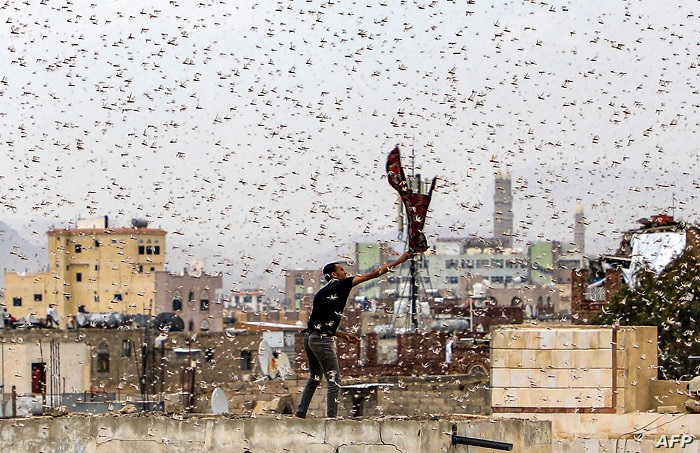
Ethiopia has deployed helicopters to spray new swarms of desert locusts that are eating crops and threatening the country’s food security. The U.S. Agency for International Development warned that billions of the pests which have descended on East Africa in recent weeks targeting crops and pastures across a region already facing widespread hunger and humanitarian needs are bound to get worse than they already are.
According to Ethiopian officials in the latest development, huge swarms swept into Ethiopia’s southern Oromia region last week from Kenya and Somalia, displacing thousands of people. Furthermore, thousands of people have been displaced from Wachile in the Southern Oromia region of Ethiopia, since the beginning of this month.
Top advisor in the crop protection department at Ethiopia’s Ministry of Agriculture Zebdios Salato said that Ethiopia engaged the swarms by spraying pesticides from the air, using three helicopters leased from the U.N. Food and Agriculture Organization (FAO). He further added that this method proved to be effective as hours after spraying the locusts lay scattered on the ground dead.
Displacement of people
But in some cases, aerial spraying is not enough. Huge swarms of locusts, the size of a city, forced more than 15,000 people to flee their homes this month in the Wachile region, said another agriculture official, Mohamed Abaqoda.
Abaqoda further explained that the displacement is because these are immature, wingless locusts that get around by hopping. As such, he added, they feed on every green leaf, flood lakes, houses, anywhere. Well over 12 villages in the area have been displaced.
Experts have described the ongoing desert locust infestation in the Horn as the worst in 25 years. Salato said widespread rainfall in late March created an ideal environment for locust breeding. The situation may get worse when the insects mature and grow wings. The desert locust can fly up to 19 kilometers per hour and cover up to 130 kilometers per day.







